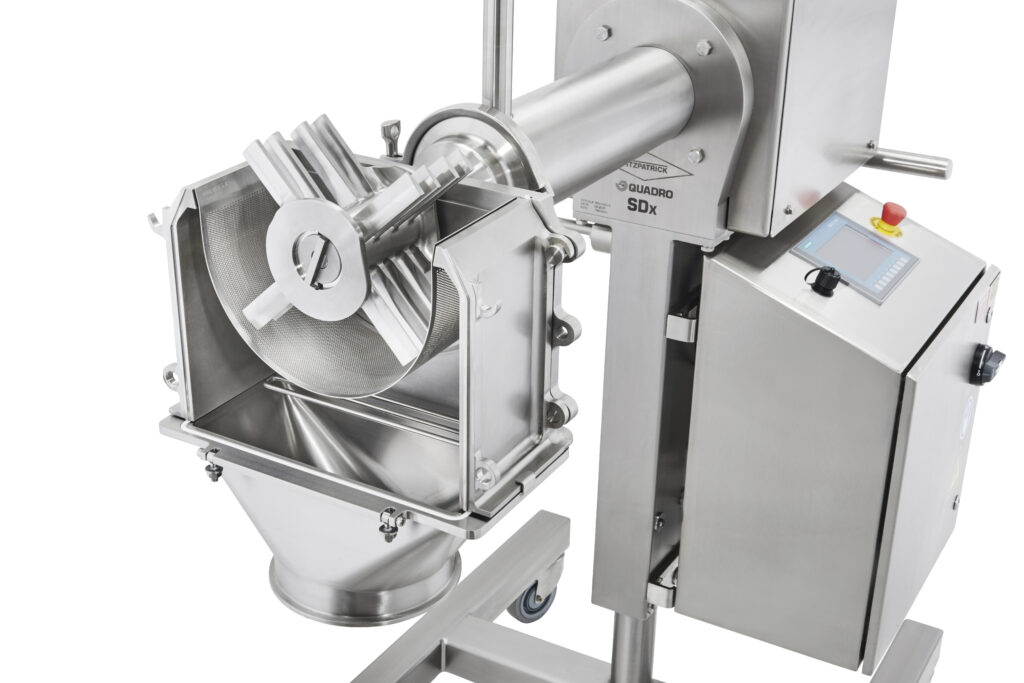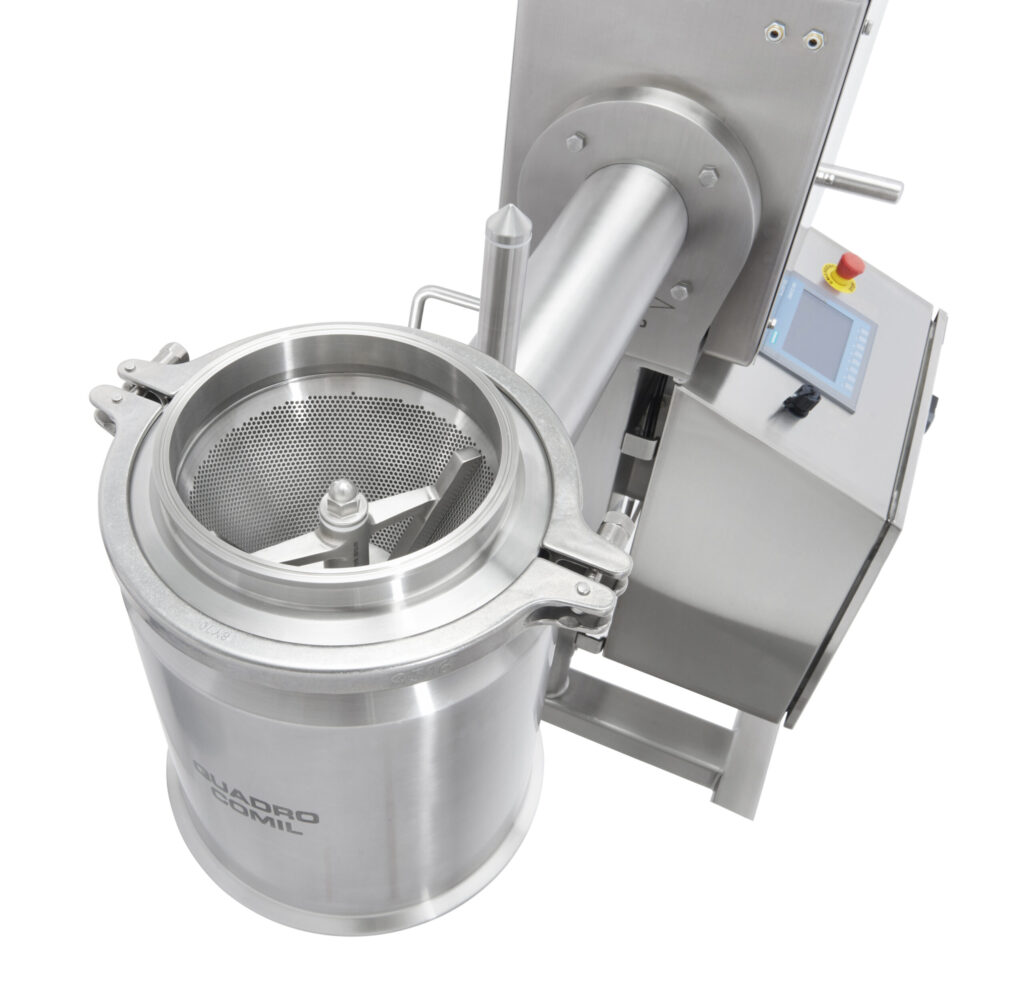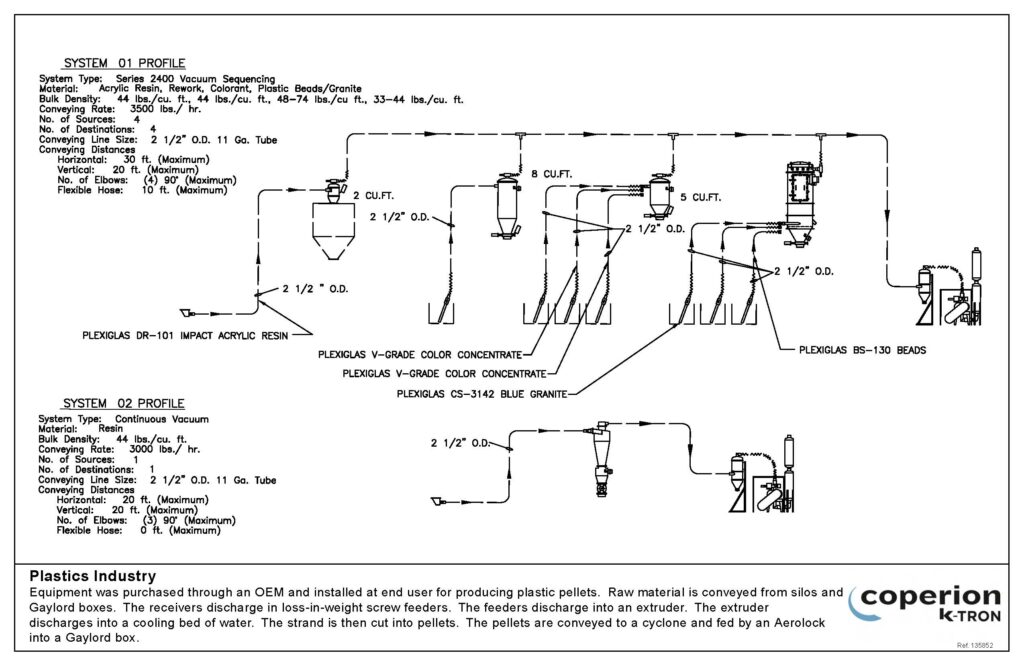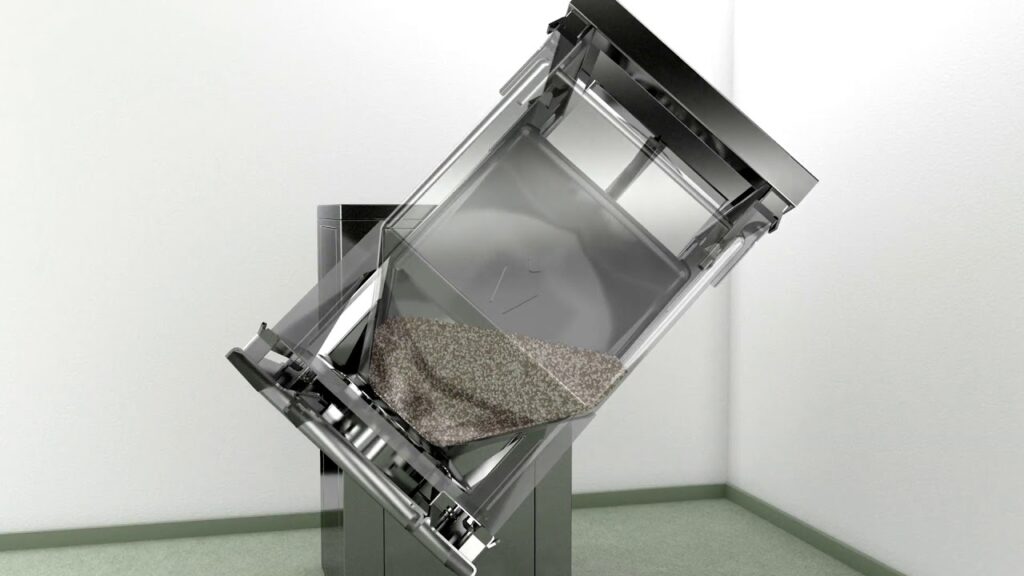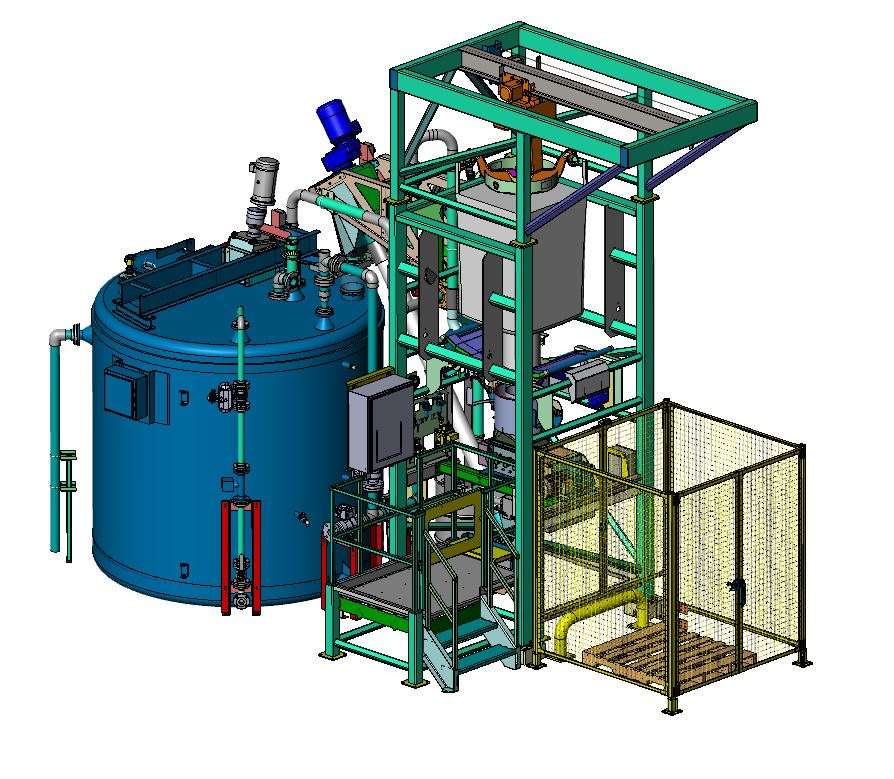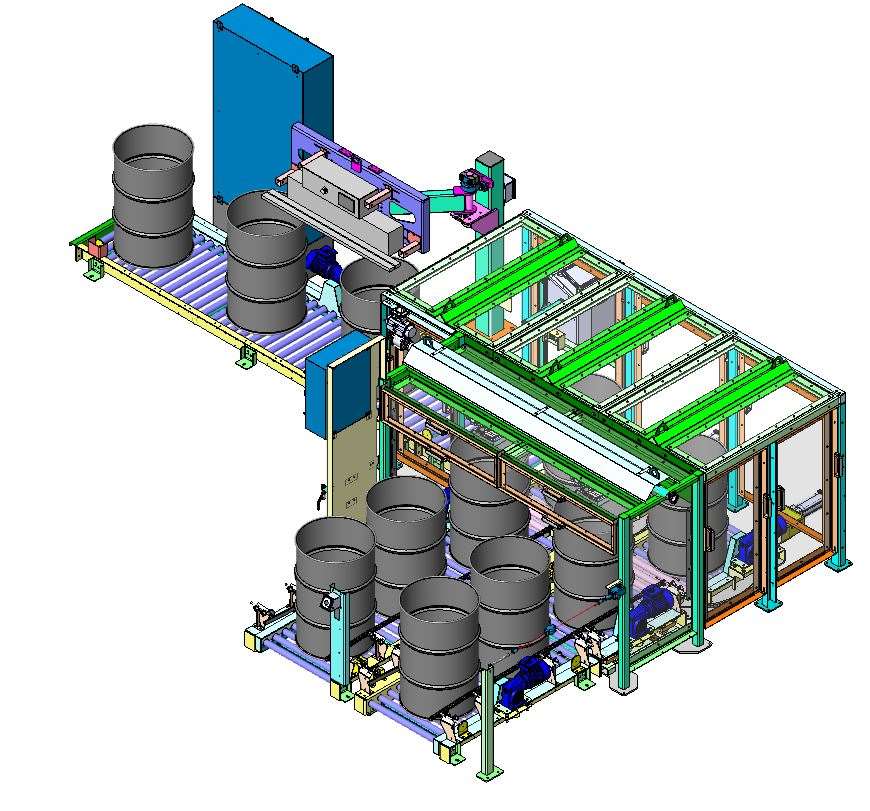The customer needed a replacement system to combine and dissolve sodium chloride with water into a brine to feed their downstream process. Their existing system was labor intensive, unreliable, and hard to keep clean. Looking to make enhancements in those areas, along with improved safety and accuracy, NBE provided a bulk bag unloader equipped with E2, dust collection, crumbler, flexible screw conveyor, and safety caging. The sodium chloride is fed into a fiberglass reinforced plastic (FRP) tank to be combined with water, utilizing a Brawn mixer to agitate the contents along with a high-shear inline mixer to shear the sodium chloride particles and quickly dissolve them. High accuracy of additions is achieved with load cells on the dry addition and a magnetic flowmeter on the water side. Conductivity instrumentation is installed in the mixing tank to verify correct solution concentrations. Sodium chloride solutions are very corrosive, so special materials such as Hastelloy, AL6XN, FRP, and CPVC were chosen for various components. NBE provided a full control package including PLC and HMI set up for automatic operation.

